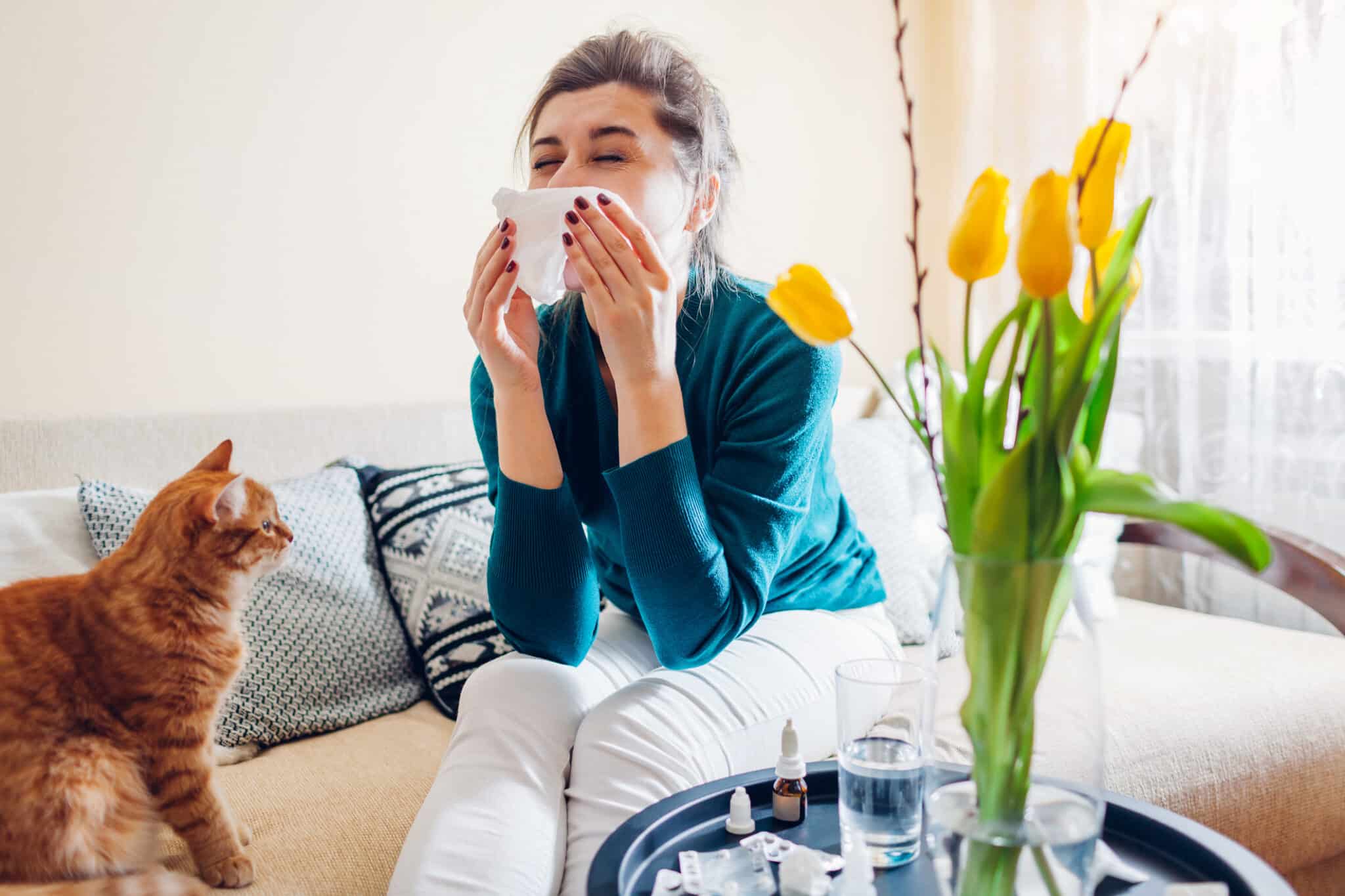Cats are one of the most beloved animals in the world, with millions of people keeping them as companions. However, for some individuals, contact with cats can lead to an allergic reaction. Cat allergies are common and can affect people of all ages. In this blog, we will discuss the causes, symptoms, and management of cat allergies.
Causes of Cat Allergies
 The primary cause of cat allergies is the protein Fel d 1 found in a cat’s skin, urine, and saliva. When a cat grooms itself, the protein Fel d 1 becomes airborne and can be inhaled by humans, causing an allergic reaction. This protein is found in all cats, regardless of breed or fur type, and can trigger symptoms in people who are sensitive to it. Additionally, other allergens, such as dust and pollen, can stick to a cat’s fur, exacerbating symptoms for people who are already sensitive to cat allergens. It’s worth noting that cat allergens can remain in a home for months after a cat has been removed, and even cleaning and vacuuming may not fully remove the allergens. As a result, it’s important to take proactive steps to manage cat allergies, even if you don’t currently have a cat.
The primary cause of cat allergies is the protein Fel d 1 found in a cat’s skin, urine, and saliva. When a cat grooms itself, the protein Fel d 1 becomes airborne and can be inhaled by humans, causing an allergic reaction. This protein is found in all cats, regardless of breed or fur type, and can trigger symptoms in people who are sensitive to it. Additionally, other allergens, such as dust and pollen, can stick to a cat’s fur, exacerbating symptoms for people who are already sensitive to cat allergens. It’s worth noting that cat allergens can remain in a home for months after a cat has been removed, and even cleaning and vacuuming may not fully remove the allergens. As a result, it’s important to take proactive steps to manage cat allergies, even if you don’t currently have a cat.
Symptoms of Cat Allergies
 The symptoms of cat allergies can range from mild to severe, and they can vary from person to person. The most common symptoms include:
The symptoms of cat allergies can range from mild to severe, and they can vary from person to person. The most common symptoms include:
- Sneezing
- Runny or stuffy nose
- Itchy or watery eyes
- Itchy skin
- Rash or hives
- Coughing or wheezing
- Difficulty breathing
In some cases, cat allergies can trigger asthma symptoms, such as coughing, wheezing, and difficulty breathing. Severe allergic reactions can be life-threatening and require immediate medical attention.
Management of Cat Allergies
 If you or someone in your household has a cat allergy, there are several steps you can take to manage the symptoms:
If you or someone in your household has a cat allergy, there are several steps you can take to manage the symptoms:
Limit exposure to cats: The best way to manage cat allergies is to avoid contact with cats. If you don’t already have a cat, don’t get one. If you do have a cat, keep it out of your bedroom and use a HEPA air filter in your home.
Keep your home clean: Regular cleaning can help reduce the number of cat allergens in your home. Vacuum carpets and upholstery frequently. Wash bedding and curtains in hot water to remove allergens. You may also want to consider using an air purifier with a HEPA filter to get rid of allergens from the air.
Immunotherapy: Immunotherapy, also known as allergy shots, can help desensitize the immune system to cat allergens over time. This treatment involves a series of injections that gradually increase in strength.
Keep cats out of certain areas: If you do have a cat but also suffer from allergies, consider designating certain areas of your home as “cat-free” zones. This might include your bedroom or other areas where you spend a lot of time. Keeping cats out of these areas can help reduce your exposure to cat allergens.
Use allergy medication: Over-the-counter or prescription medications can also be effective in managing cat allergies. Antihistamines, such as loratadine or cetirizine, can help relieve symptoms like sneezing and itching. Nasal sprays, such as fluticasone or mometasone, can help reduce inflammation in the nasal passages. Talk to your doctor or allergist to determine which medications are right for you.
Conclusion
Cat allergies are common and can cause a range of symptoms, from mild to severe. Avoiding contact with cats, keeping your home clean, and taking allergy medications can help manage the symptoms of cat allergies. If you have severe allergies, you may want to consider immunotherapy. If you suspect you have a cat allergy, talk to your healthcare provider about diagnosis and treatment options.
